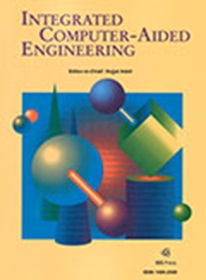A high-level simulator for Network-on-Chip
IF 5.3
2区 计算机科学
Q1 COMPUTER SCIENCE, ARTIFICIAL INTELLIGENCE
引用次数: 0
Abstract
This study presents a high-level simulator for Network-on-Chip (NoC), designed for many-core architectures, and integrated with the PlatEMO platform. The motivation for developing this tool arose from the need to evaluate the behavior of application mapping algorithms and the routing, both aspectsare essential in the implementation and design of NoC architectures. This analysis underscored the importance of having effective NoC simulators as tools that allow for studying and comparing various network technologies while ensuring a controlled simulation environment. During this investigation and evaluation, some simulators, such as Noxim, NoCTweak, and NoCmap, among others, offered configurable parameters for application traffic, options to synthetically define topology and packet traffic patterns. Additionally, they include mapping options that optimize latency and energy consumption, routing algorithms, technological settings such as the CMOS process, and measurement options for evaluating performance metrics such as throughput and power usage. However, while these simulators meet detailed technical demands, they are mostly restricted to analyzing the low-level elements of the architecture, thus hindering quick and easy under- standing for non-specialists. This insight underscored the challenge in developing a tool that balances detailed analysis with a comprehensive learning perspective, considering the specific restrictions of each simulator analyzed. Experiments demonstrated the proposed simulator efficacy in handling algorithms like GA, PSO, and SA variant, and, surprisingly, revealed limitations of the XY algorithm in Mesh topologies, indicating the need for further investigation to confirm these findings. Future work will expand the simulator functionalities, incorporating a broader range of algorithms and performance metrics, to establish it as an indispensable tool for research and development in NoCs.芯片网络高级模拟器
本研究介绍了一种高级芯片网络(NoC)模拟器,该模拟器专为多核架构设计,并与 PlatEMO 平台集成。开发该工具的动机源于评估应用映射算法和路由行为的需要,这两个方面在 NoC 架构的实施和设计中都至关重要。这项分析强调了拥有有效 NoC 仿真器的重要性,这些仿真器可作为研究和比较各种网络技术的工具,同时确保仿真环境受控。在调查和评估过程中,一些模拟器(如 Noxim、NoCTweak 和 NoCmap 等)提供了可配置的应用流量参数、合成定义拓扑和数据包流量模式的选项。此外,它们还包括可优化延迟和能耗的映射选项、路由算法、CMOS 工艺等技术设置,以及用于评估吞吐量和功耗等性能指标的测量选项。然而,虽然这些模拟器能满足详细的技术要求,但它们大多仅限于分析架构的底层元素,从而阻碍了非专业人员快速、轻松地了解架构。考虑到所分析的每种模拟器的具体限制,开发一种兼顾详细分析和全面学习视角的工具就显得尤为重要。实验证明了所提出的模拟器在处理 GA、PSO 和 SA 变体等算法方面的功效,而且令人惊讶的是,它还揭示了 XY 算法在网状拓扑结构中的局限性,这表明有必要进一步研究以证实这些发现。未来的工作将扩展模拟器的功能,纳入更广泛的算法和性能指标,使其成为 NoC 研发中不可或缺的工具。
本文章由计算机程序翻译,如有差异,请以英文原文为准。
求助全文
约1分钟内获得全文
求助全文
来源期刊

Integrated Computer-Aided Engineering
工程技术-工程:综合
CiteScore
9.90
自引率
21.50%
发文量
21
审稿时长
>12 weeks
期刊介绍:
Integrated Computer-Aided Engineering (ICAE) was founded in 1993. "Based on the premise that interdisciplinary thinking and synergistic collaboration of disciplines can solve complex problems, open new frontiers, and lead to true innovations and breakthroughs, the cornerstone of industrial competitiveness and advancement of the society" as noted in the inaugural issue of the journal.
The focus of ICAE is the integration of leading edge and emerging computer and information technologies for innovative solution of engineering problems. The journal fosters interdisciplinary research and presents a unique forum for innovative computer-aided engineering. It also publishes novel industrial applications of CAE, thus helping to bring new computational paradigms from research labs and classrooms to reality. Areas covered by the journal include (but are not limited to) artificial intelligence, advanced signal processing, biologically inspired computing, cognitive modeling, concurrent engineering, database management, distributed computing, evolutionary computing, fuzzy logic, genetic algorithms, geometric modeling, intelligent and adaptive systems, internet-based technologies, knowledge discovery and engineering, machine learning, mechatronics, mobile computing, multimedia technologies, networking, neural network computing, object-oriented systems, optimization and search, parallel processing, robotics virtual reality, and visualization techniques.
 求助内容:
求助内容: 应助结果提醒方式:
应助结果提醒方式:


